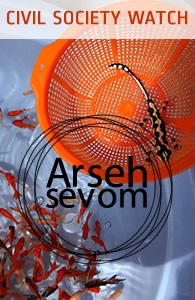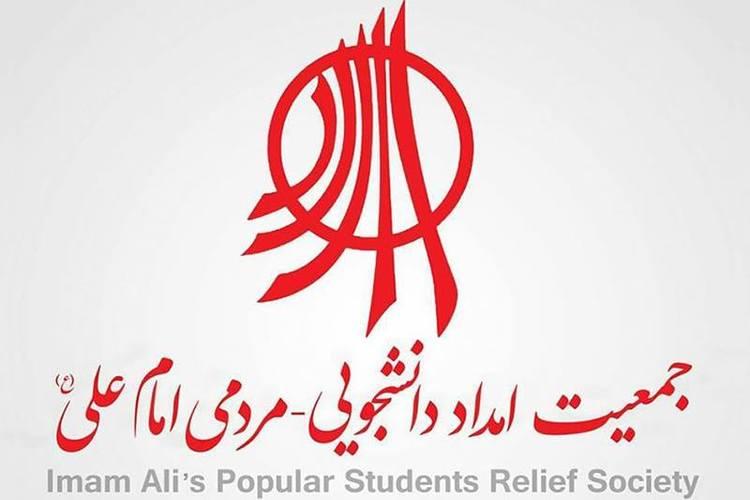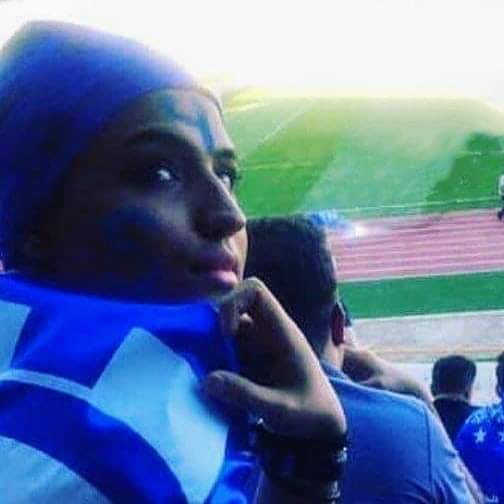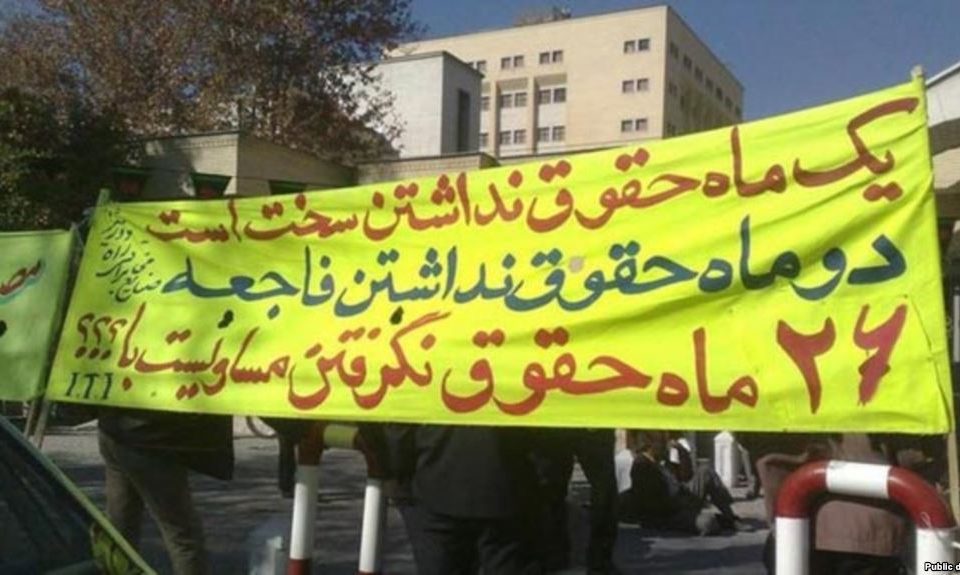Past issues of Arseh Sevom’s Newsletter
March 6, 2012
Speaking Out Against War, The Lorestani Salamander, More Publishers Banned, and the Cyberspace Patrol
March 12, 2012
All you need to know: a quick breakdown of findings from Dr. Ahmed Shaheed’s UN report
This summary provides readers with a quick overview of the human rights report provided by Dr. Ahmad Shaheed to the UN Human Rights Council. It is reposted with permission from the Iran Human Rights Documentation Center
(7 March 2012) — Dr. Ahmed Shaheed, Special Rapporteur on the situation of human rights in the Islamic Republic of Iran, has just released his latest report to the United Nations Human Rights Council. Read the 36 page report and IHRDC’s quick breakdown of the report’s highlights here:
On 6 March 2012 Dr. Ahmed Shaheed, United Nations Special Rapporteur on the situation of human rights in the Islamic Republic of Iran, released his report to the United Nations Human Rights Council. The 36 page report can be read here.
Who is the Special Rapporteur?
Dr. Ahmed Shaheed was selected by the United Nations Human Rights Council in 2011 as a neutral party to investigate human rights violations in Iran and to write an official report based on these findings. Other special representatives and rapporteurs on Iran have preceded Dr. Shaheed, though with more specialized mandates. (A History of United Nations Special Representatives and Rapporteurs in Iran)
What is the report?
The report discusses what Dr. Shaheed found regarding a range of issues including capital punishment, fair elections, prison conditions, women’s rights, freedom of the press, religious and racial discrimination, and recommendations for what can be done to fix the situation. The report mostly focuses on issues since the June 2009 Iranian Presidential election.
Why does it matter?
His report describes patterns of human rights abuses in Iran and concludes that there are systematic problems with how the government treats its people. The United Nations Human Rights Council will use what the UNSR found in the report and his recommendations to take further actions to protect the people of Iran.
What does he recommend?
Paragraph 69: Recommends that Iran eliminate discriminatory laws and adopt laws that accord with international human rights law.
Paragraph 70: Recommends releasing political prisoners and prisoners of conscience.
Paragraph 71: Recommends an extensive investigation into the violence and repression that occurred after the June 2009 elections
Paragraph 72: Recommends an end to executions for cases that do not meet the standard of “serious crime” as defined by international law.
Paragraph 73: Recommends an end to the death penalty for children.
Paragraph 74: Recommends closer engagement between Iran and UN bodies as well as greater transparency and compliance with previous UN reports and findings.
For more information about:
Executions and capital punishment (paragraphs 20-22), see:
IHRDC Chart of Executions by the Islamic Republic of Iran – 2012
This chart documents executions of people by the Islamic Republic of Iran beginning in January 2012. The official announcements are noted but, as the Iranian government does not announce many executions, it is difficult to know the exact number.
Women’s Rights (paragraphs 41-44), see:
The Iran Human Rights Documentation Center has covered the women’s rights movement since the 2009 Presidential Elections in-depth. “Silencing the Women’s Rights Movement in Iran” examines the Islamic Republic’s attempt to dismantle the women’s rights movement leading up to and following the June 12, 2009 presidential election. Members of the movement – from part-time volunteers to world-renowned human rights defenders – have been faced with a stark choice: cease their activism in order to protect themselves, their families and livelihoods, or continue their activism at the risk of facing criminal allegations, arbitrary arrest and detention, interrogation, torture and even death. Many have fled the country.
Ethnic and racial discrimination (paragraphs 62-66), see:
The Iran Human Rights Documentation Center will soon be releasing a 50 page report on the issues discussed in paras 62 – 64 of Dr. Shaheed’s report, including testimony from the families of Kurdish activists on death row, including the father of Zanyar Moradi.
Sabah Nasri, publisher of “Rujameh,” recounts his arbitrary arrest, detention and torture by Islamic Republic officials in Sanandaj and Tehran for his activities in support of Kurdish rights in Iran. Nasri also describes the regime’s treatment of Farzad Kamangar and Farhad Vakili, with whom he shared prison cells. Kamangar, Vakili and three other prisoners were executed on May 9, 2010, without notification to their families.
Shima Asaadi, a young Kurdish Iranian woman from Sanandaj, Iran, describes her multiple arrests and her expulsion from university on account of her activities with the Kurdistan Democratic Party.
Treatment of the lesbian, gay, bisexual and transgender community (paragraphs 67-68), see:
Matin Yar, a young homosexual man from Iran, describes the torture and rape he was subjected to in Iranian prison. A fear of execution on account of his homosexuality led Matin to flee Iran shortly after his release from prison.
Saye Sky, a lesbian rap musician, describes the persecution she suffered that forced her to flee Iran and seek refuge in Turkey.
Prisons (paragraph 30), see:
“Surviving Rape in Iran’s Prisons” documents the ordeals of five former prisoners – two women and three men – who were raped, threatened with rape, or witnessed rape while incarcerated in Iranian prisons.
Human rights defenders and prisoners of conscience (paragraphs 48-51), see:
“Violent Aftermath: The 2009 Election and Suppression of Dissent in Iran”documents and analyzes the regime’s brutal suppression of dissent after the June 12, 2009 presidential elections. Hours before the incumbent, Mahmoud Ahmadinejad, was declared the victor on election day, the regime began arresting opposition politicians, journalists and other activists. The arrests continued through the end of the year as did demonstrations that were met with violence by the regime’s security apparatus. This report documents in detail dozens of human rights abuses of Iranians and foreigners—including beatings, kidnappings, rapes and murders—and analyzes the perpetrators’ liability under Iranian and international law.
Legislation and laws (paragraphs 15-19), see:
Para 15 –
The Iran Human Rights Documentation Center released the first ever English translation of the Parties and Associations Law (PAL) Reform Plan. The PAL Reform Plan, which is currently under review by the Parliament (Majlis) of the Islamic Republic of Iran (IRI), will – if approved – replace the IRI’s existing Parties Law enacted thirty years ago. The legislation contains key provisions such as a description of persons banned from participation in political parties and associations in Iran (see Article 24) and the process by which demonstrations by political parties may be held (see Article 44). This translation serves as a valuable reference in an assessment of the rights to freedom of expression and the freedom of assembly and association in the IRI.
Para 16 –
English translation from Iran Rooyan of the “Plan for the Establishment, Activities, and Government Monitoring of NGOs” (known informally as the “NGO bill”)
Para 17 –
For further reading on what type of laws govern the investigations of Parliament members in Iran, see the first-ever, full-length English translation of the Internal Regulation on the Commission of Article 90 of the Islamic Republic of Iran’s Constitution which governs the investigation of complaints made about the operation of the Parliament (Majlis), the Executive, and the Judiciary.
Para 18 –
The Iran Human Rights Documentation center has closely followed the amendments made to the Family Protection Act in 2011 and has provided an amended version with the changes tracked in both English and Persian.
Para 19 –
Criminal Responsibility of Children in the Islamic Republic of Iran’s New Penal Code
In this IHRDC legal essay, Iranian defense lawyer Mohammad Hossein Nayyeri explains why the new Islamic Penal Code, despite allegations to the contrary in the media, does not end the application of the death penalty to juvenile offenders in Iran.
The Question of “Stoning to Death” in the New Penal Code of the IRI
In this legal essay, Iranian lawyer Mohammad Hossein Nayyeri explains why, contrary to popular reports, the silence of Iran’s new Islamic Penal Code on the punishment of stoning for adultery does not mean stoning has in fact been abolished from the Code.
Many claims have been made by Iranian parliamentarians and subsequently spread in Iranian media about the purported abolition of the death penalty and Qisas punishments (retribution) for juveniles under 18 years old in the new Penal Code in the Islamic Republic of Iran. The charts below, designed by Iranian lawyer Mohammad Hossein Nayyeri, examine the amendments in the Code as they relate separately to boys and girls and show that the assertion that the death penalty for juveniles has been abolished is inaccurate. The tables in red in the chart demonstrate that, even with the new changes, the risk of application of the death penalty and other violent and inhumane punishments on children still exists. The discrimination between boys and girls in the application of these punishments is clear too. For a more detailed explanation of the changes, please see Nayyeri’s legal essay on the subject entitled “Criminal Responsibility of Children in the Islamic Republic of Iran’s New Penal Code”.


Notes and Expressions:
* Qisas: Crimes punishable by Qisas (retribution) are a category of crimes under Islamic criminal law which is best illustrated in the old maxim “An eye for an eye, a tooth for a tooth, and a life for a life”.
** Hudud: Crimes punishable by hadd (pl. hudud) are those with fixed and severe punishments in Islamic sources. These include crimes such as illicit sex, sodomy, homosexual behavior between women, consumption of intoxicants, muharebeh, etc. and are punishable by the death penalty, stoning to death, amputation of the right hand and left foot, flogging, etc.
*** Ta’zir: crimes punishable by ta’zir are those for which punishments are not fixed and instead are left to the discretion of the Shari’a judge. However, almost all ta’zir crimes are dealt with in the Penal Code and the judge may apply the punishments prescribed in the Code. They include the rest of the crimes other than hudud and qisas.
Note 1- Minor Correctional Measures include submission of children to their parents, sending them to a social worker or psychologist, etc.
Note 2- Moderate Correctional Measures include detention in the Correction and Rehabilitation Center from 3 months to 1 year.
Note 3- Severe Correctional Measures include detention in the Correction and Rehabilitation Center for up to 2 years
Note 4- Extra Severe Correctional Measures include detention in the Correction and Rehabilitation Center for up to 5 years
Note 5- The tables in red show the risk of application of violent and inhumane punishments such as the death penalty, amputation, flogging, etc to children.





